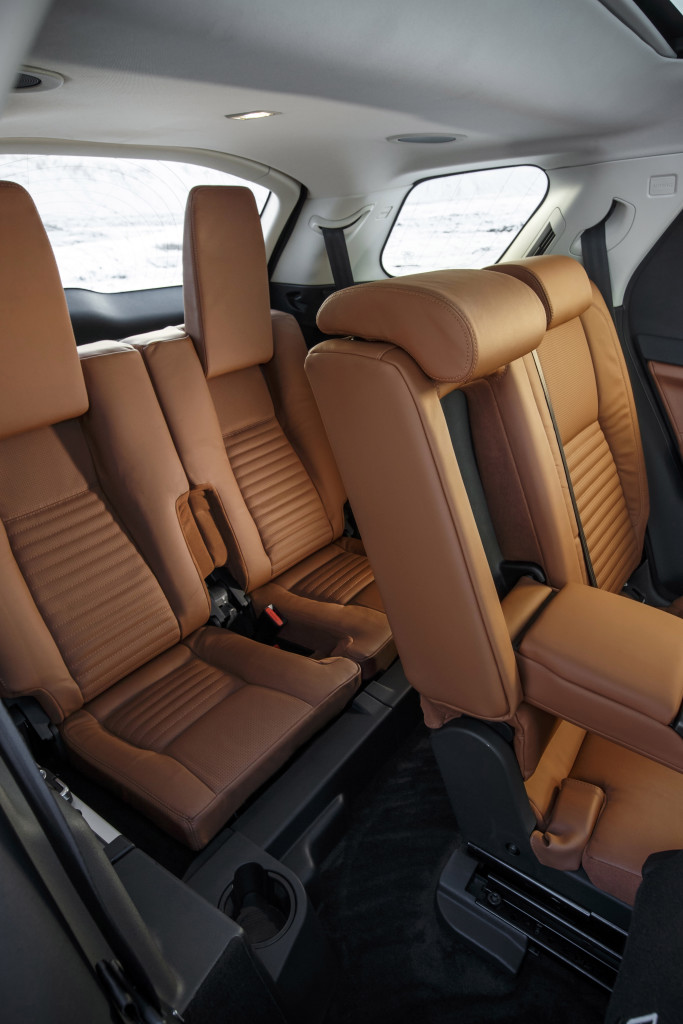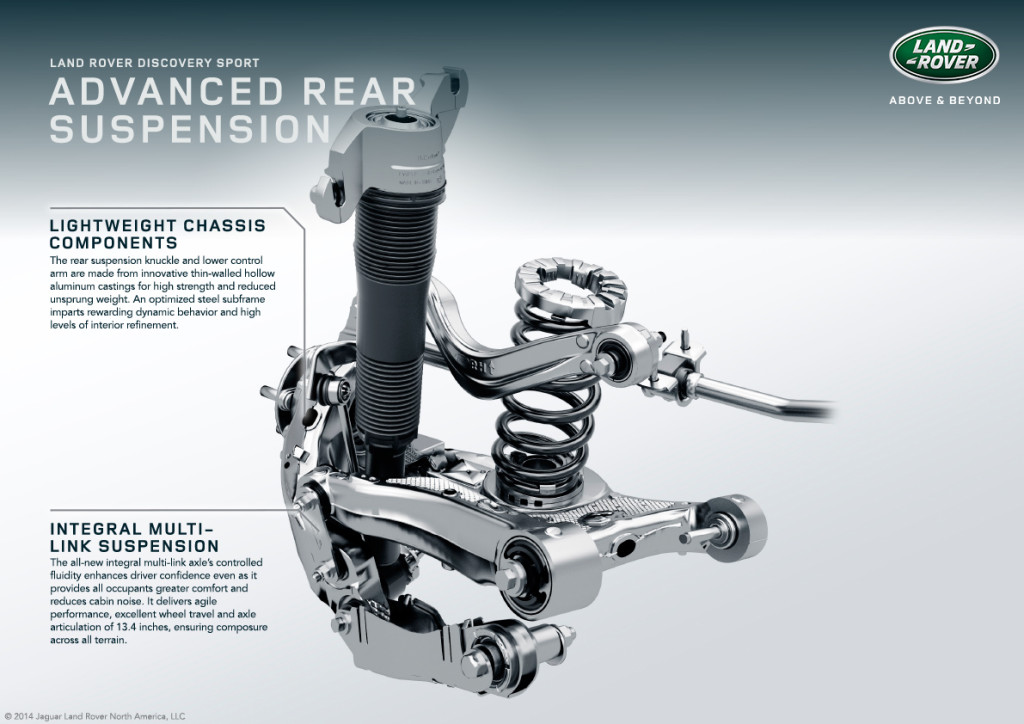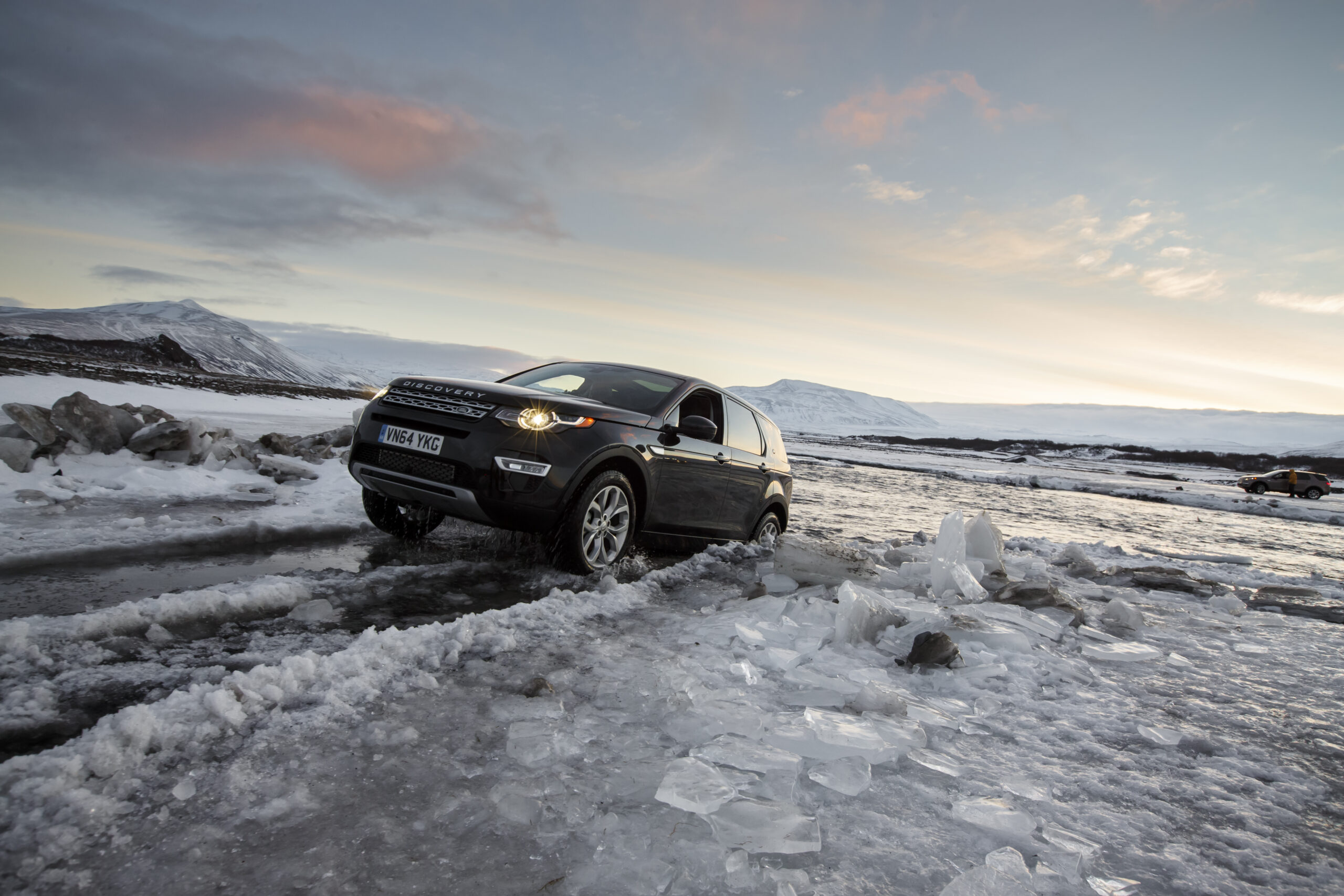UNITED STATES—The original Land Rover Discovery was succeeded by the LR3 (in U.S. markets), which received a mid-run facelift and name change to, LR4. Makes sense, so far, right? Liking where their new model nomenclature was going, marketing executives at Land Rover decided to makeover their compact crossover (the Freelander) and slot it into the entry-level spot as…that’s right…the LR2. Everything seems to be logically translating just fine at this point. So, why, pray tell, has Land Rover decided to bring Disco back from the dead?
That’s right, the Discover name is back for 2015. Technically, the new vehicle is going by the name, “Discovery Sport,” but not as a replacement for the LR4, as that would make sense from a lineage standpoint. Instead, it replaces the LR2. When posed the question, “Will it slot in between the Range Rover and the Evoque?”, one Land Rover Experience rep replied, “No, the Discovery replaces the Freelander [LR2]. The Evoque is a Range Rover.” The implication seemed to be that the Evoque shares something special with the top-of-the line Range Rover, while the Discovery is merely another Land Rover product. Was this a hint of more restructuring to come?
Could it be that somewhere in the not-so-distant future, Land Rover will resemble something more of an umbrella company featuring two or more distinct divisions: Range Rover & Discovery: The first being the premium division, the second being more of a mainstream offering? This approach certainly isn’t unprecedented and seams to be working out quite well for Toyota (Lexus), Nissan (Infiniti), & Honda (Acura). Whether this presumptive rhetorical question explains the return of Disco remains to be seen.
An initial impression would suggest there is a much stronger link between the Range Rover Evoque and the new Discovery Sport than Range Rover PR reps would like you to believe. Interior materials and instrumentation appear to be genetic clones. The new chassis also borrows some front-end architectural cues and components from the Evoque’s underpinnings, including a magnesium crossbeam for high torsional rigidity and reduced weight. The 240 hp 2-liter turbo and nine-speed automatic transmission are shared, as well.
Once a badge worn proudly by rugged African Safari vehicles, the Discovery name now finds itself on a vehicle that is decidedly more civilized in every way. “Designed and engineered to be the world’s most capable and versatile premium compact SUV, this is a vehicle that will appeal not only to existing Land Rover customers but to a whole new group of people who may never have considered Land Rover before,” said Gerry McGovern, Land Rover Design Director and Chief Creative Officer. “It is quite simply the most accomplished vehicle in its segment.”
Recognizing today’s market for a rugged truck-based SUV has diminished greatly since the original Discovery roamed the Savanna (or Serengeti), Land Rover has decided to market the Discovery Sport as a Jack (or King, if possible) of all trades.
Some key features that could enable the compact Land Rover to achieve Swiss-Army-Knife versatility are the following: Available 3rd row seating (“5+2”), an advanced rear suspension design that provides excellent wheel articulation without diminishing cargo space, Autonomous Emergency Braking, and, of course, Land Rover’s Terrain Response system.


However, there will be no “Heavy Duty” package featuring various expedition-enhancing toys, such as Land Rover’s auto-locking rear differential. Nor will there be a low-range transfer case. While the Discovery Sport’s extra low first gear is intended to provide some semblance of a crawl ratio, if best-in-class off-road capability is a requirement, that bragging right belongs to another. For that, one will have to visit a local Jeep dealership and try the Cherokee Trailhawk on for size, that is, if its love-it-or-hate-it looks aren’t a deal-breaker.
All said, the Discovery Sport should be quite appealing to brand loyalists but also to those who previously felt the Freelander’s seating for five was just a bit too limited but couldn’t afford the cost of admission into the LR4 owner’s club. It should also attract those who feel the LR4 is just a bit ungainly for a short trip to soccer practice or the grocery store. There is now a middle-ground option. Check back in a couple weeks for a more in-depth road test review in which the Discovery Sport is sent through a gauntlet of off-road obstacles. Until then, please leave questions and comments below. If reading in print, please email Kyle at kyle@canyon-news.com.






